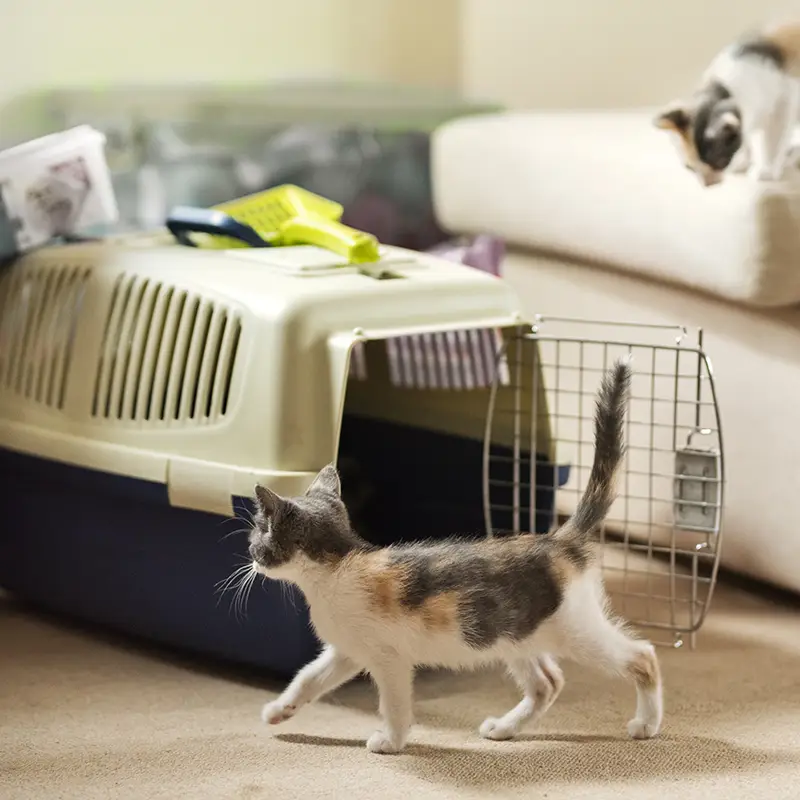Many cat owners are all too familiar with “the chase” that ensues as soon as the cat sees the carrier. Hopefully, these tips and suggestions below will help create a more pleasant trip for both you and your kitty.
Reducing the stress of transport
- Socialize kittens to the carrier and to travelling:
- Keep the transport carrier out and accessible in the home.
- Create and maintain a positive association with the transport carrier by making it a comfortable resting, feeding or play location.
- When feasible, and if the cat is neutral or favorably inclined to car travel, encourage owners to take the cat on periodic car rides paired with positive experiences.
- Withholding food prior to travel may prevent motion sickness, increase interest in treats at the clinic, and is beneficial if blood is to be collected.
- Apply a calming synthetic pheromone to, and/or place familiar clothing from a favorite person in, the carrier on a routine basis and just prior to transport. We recommend Feliway.
- Provide cover/hiding options in or over carrier (eg, blanket draped over carrier) during transport.
Helping your Cat Become Comfortable with the Carrier
- Leave the cat carrier out. Leave it in a location or room where your cat spends a lot of time. You want your cat to become comfortable with her carrier, so leave the cat carrier out and make it part of your home. Hopefully, your cat will begin going into her carrier often and see the carrier as part of her space in your home.
- Handle your cat appropriately. If you need to place your cat into her carrier, it is best to carefully scoop her up with both hands and support her bottom. You want your cat to trust you when you pick her up. So, you want to handle your cat carefully and not cause her pain or fear. Many cats also have arthritis in her neck or back, so proper handling is important to avoid causing your cat pain.
- You need to treat your cat respectfully and carefully. If you drop or shove her into the carrier, she may try to bite or scratch you out of fear. If you are desperate to get your cat into her carrier, toss a blanket over your cat, wrap her like a burrito – being careful not to pull the blanket too tight – and slide her into the carrier. It’s similar to swaddling a baby. Place familiar soft bedding inside the carrier that includes your scent to help your cat feel more secure. Place treats, catnip, or toys into the carrier to encourage your cat to enter the carrier voluntarily.
- Line the bottom of the carrier. Your cat prefers a soft place to sit. Try placing a blanket in the bottom of the carrier and spraying it with a feline facial pheromone, so is not as scary of an environment.
- Be patient. When you try too hard and change your behavior, your cat can get suspicious. Instead, put catnip and toys in the carrier. With patience and time, your cat should come around.
Choosing a Cat Carrier
When you choose a carrier for your cat, we advise you select one that is durable, safe, easy-to-clean, and designed for your cat’s needs.
Here is information to consider when you are looking for the perfect carrier for your cat:
Impact Protection
- Look for a one that is sturdy and made of an impact-resistant material, like plastic or fiberglass.
- Ensure the carrier can be positioned safely in your vehicle on a level backseat and secured with a seat-belt around the front of it.








!Social Media Icons